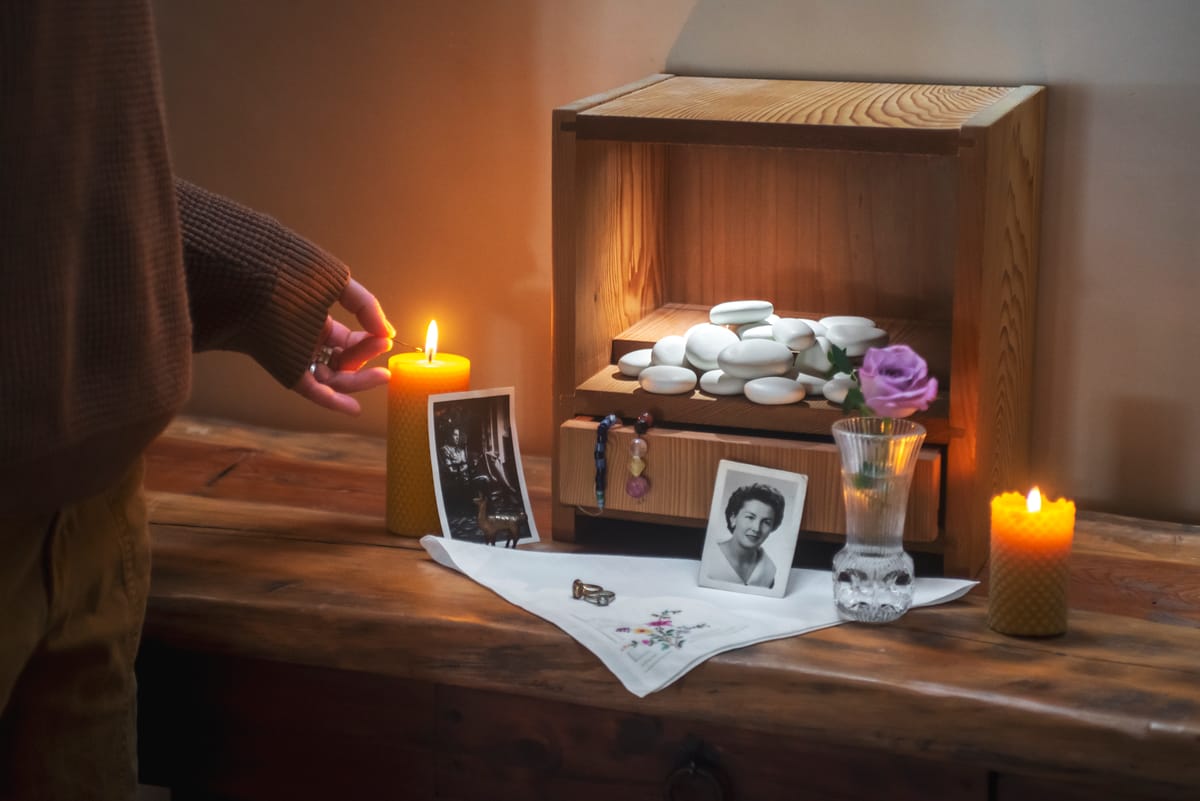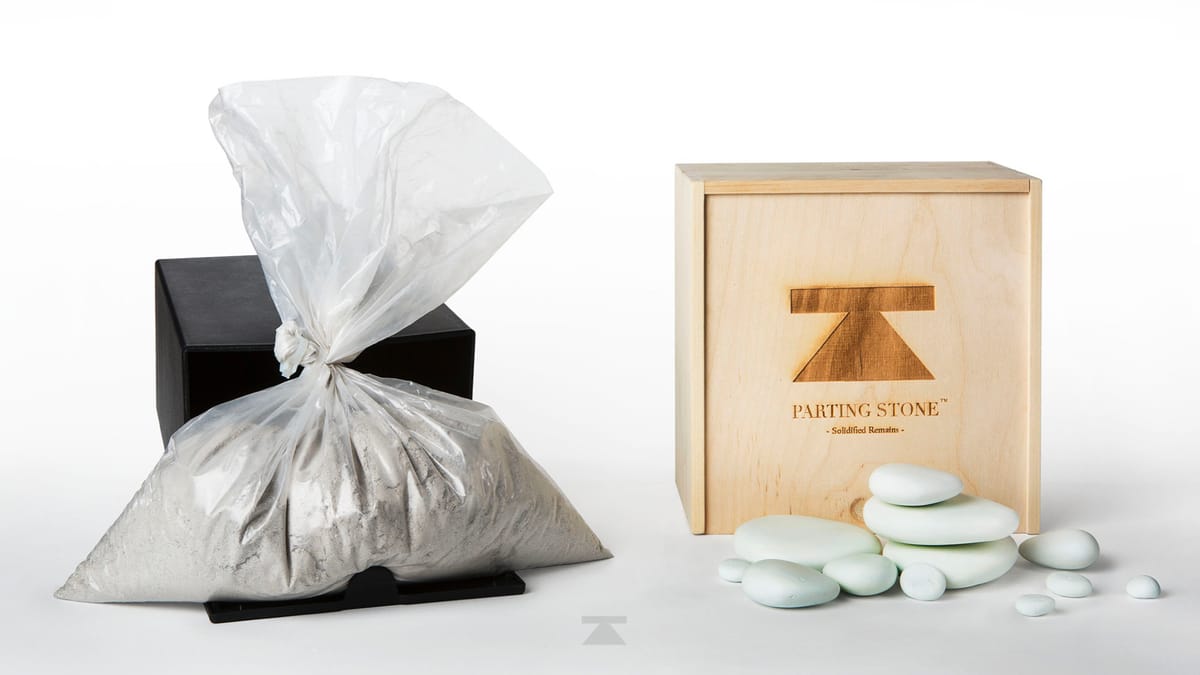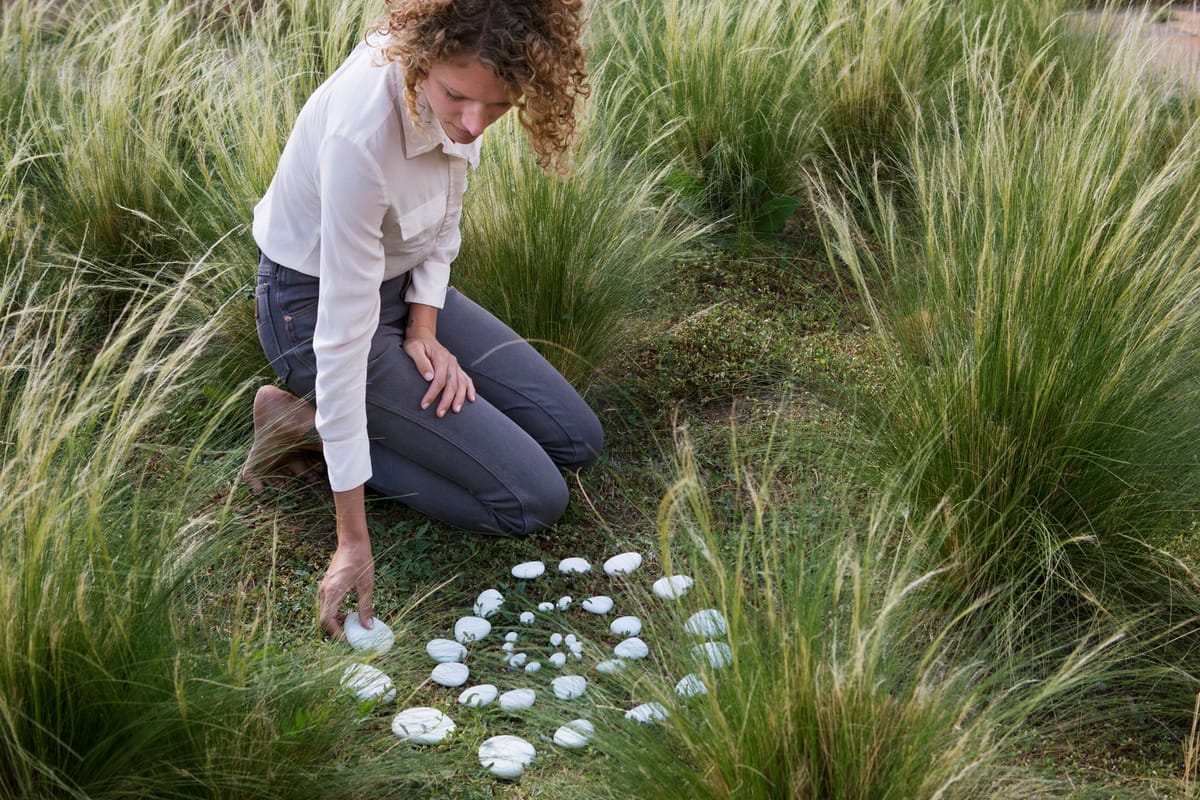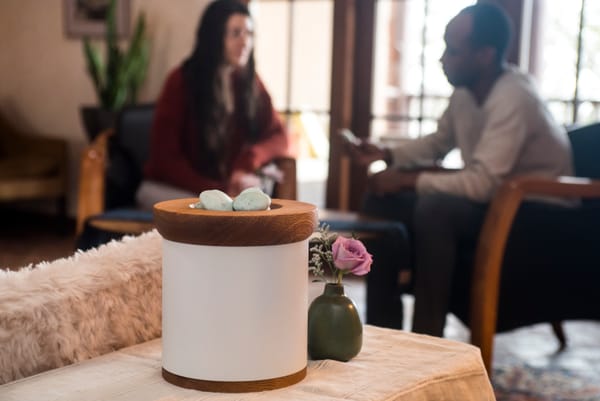Ash Scattering vs Keeping: A Complete Decision Guide for Families
Ash scattering vs keeping: Explore the emotional and practical realities of both choices. Discover how solidified remains offer families a third option that honors permanence and release.

The decision between scattering and keeping ashes is deeply personal and often anxiety-inducing. Many families struggle with the permanence of scattering versus the long-term responsibility of keeping cremated remains. Both choices carry emotional weight, practical considerations, and potential for future regret. Understanding the full scope of each option, including the hidden challenges of living with conventional ashes, can help you make a decision that honors your loved one while supporting your own healing journey. A third option now exists: solidified remains offer families the ability to both keep tangible stones and scatter symbolically, eliminating the false choice between permanence and release.
The question sits heavy in your mind, returning during quiet moments when you least expect it. Should you scatter your loved one's ashes or keep them? This decision about ash scattering vs keeping feels impossibly permanent, and the weight of choosing correctly can be overwhelming. You are not alone in this struggle. Thousands of families face this same crossroads every year, torn between the symbolic beauty of release and the comfort of physical presence.
This guide respects that no one can make this decision for you. Instead, we will explore the full landscape of considerations surrounding both scattering ashes and keeping cremation ashes, including the practical realities and emotional complexities that other resources often overlook. Your timeline is your own, and whatever choice feels right for your family deserves validation.
Keeping ashes, conversely, offers tangible continuity. An urn on a mantle or a stone on a bedside table becomes a daily point of contact, a way to speak aloud to someone who is gone. Yet many families discover a different problem: conventional ashes are gritty, unpredictable, and too often, stored in closets or boxes because they feel too unsettling to display. That hidden discomfort creates its own grief.
Parting Stone’s solidified remains elegantly bridge these needs. By transforming ashes into smooth, shareable stones, families gain options: scatter some, keep some, give pieces to distant relatives, and travel with a remembrance that feels like a companion rather than a task. The stones remove the practical anxieties such as spilling, documentation, and travel restrictions, while preserving meaning.
In my practice, a family I counseled struggled for years over a beloved father’s ashes. One sister wanted a single scattering at his favorite lake; another feared losing the last physical trace. We chose a hybrid approach: a small scattering ritual and then the solidified stones for each sibling. At the lake, the release became a gentle ceremony; at home, the stones became quiet anchors—objects of memory, grief, and daily comfort.
There is no universally “right” choice. The best decisions honor both the loved one and the living: practical, compassionate, and adaptable. Consider what your family needs now, and what you might need five or twenty years from today. There are many ways to love and remember. Sometimes that way is scattering, sometimes keeping, and sometimes, transforming what we keep so it can truly be held.
Cathy Sanchez Babao
Parting Stone Grief Coach
Understanding Why This Decision Feels So Difficult
The choice between ash scattering vs keeping carries emotional stakes unlike almost any other decision you will face. This is not about selecting a memorial product or planning a service. This decision determines how you will physically relate to your loved one's remains for the rest of your life.
The permanence creates natural anxiety. If you scatter ashes, they are gone. You cannot change your mind later, gather them back, or give some to a family member who asks years from now. If you keep them, you are committing to decades of storage, potentially passing this responsibility to the next generation. Both paths close certain doors while opening others.
Family dynamics add another layer of complexity. Different family members often hold conflicting preferences. One sibling wants a scattering ceremony at the beach where your parent loved to walk. Another cannot bear the thought of release and wants the ashes kept at home. Adult children may have different needs than a surviving spouse. These disagreements are not about who loved you more. They reflect different grief styles and different ways of maintaining connection.
Fear of regret haunts this decision. What if you scatter the ashes and later desperately wish you had something tangible to hold on to? What if you keep them and they stay hidden in a closet for twenty years, making you feel guilty every time you see them? These are valid concerns that deserve thoughtful consideration rather than rushed resolution.

Ash Scattering: Considerations and Realities
Many families find deep meaning in the concept of scattering ashes. The symbolism of returning to nature, releasing oneself to the wind or water, and freedom from physical containment resonates with certain spiritual beliefs and personal values. Scattering can feel like a final gift, allowing your loved one to become part of a place they cherished.
The ceremony itself can provide profound healing. Gathering family and friends at a meaningful location to release ashes together creates a shared, poignant moment of remembrance. Some families describe feeling their loved one's presence strongly during these ceremonies, as if participating in one last journey together. The act of physically releasing ashes can symbolize acceptance and transformation in the grief journey.
However, the practical realities of scattering ashes deserve honest examination. Wind direction matters significantly. Ashes blow back onto mourners more often than people anticipate, creating uncomfortable moments during what should be sacred ceremonies. Water scattering presents different challenges. Ashes do not dissolve instantly or disperse romantically, as seen in movies. They often float on the surface in visible clumps before slowly sinking or washing up on shore.
Legal restrictions complicate many scattering plans. National parks require permits and have designated areas for scattering. Private property requires the owner's permission. Many beaches prohibit ash scattering or restrict it to designated areas and specific times. Cities often have ordinances against scattering in public places. These regulations exist for valid public health reasons, but they can force families to abandon their ideal locations.
The finality brings legitimate emotional concerns. Future generations will have no physical remains to visit or connect with. Family members who could not attend the scattering ceremony miss the opportunity entirely. If someone close to your loved one re-enters your life years later, perhaps a long-lost friend or estranged relative, you cannot share any remains with them. The scattering location may become inaccessible due to property changes, environmental restrictions, or your own mobility limitations as you age.
Some families experience unexpected grief responses after scattering. The sense of having "nothing left" can intensify feelings of loss rather than providing the closure families anticipated. Others feel anxious about the scattering location, worrying about development, pollution, or changes to the natural environment where their loved one is now at rest.
Keeping Cremation Ashes: Considerations and Realities
Keeping cremation ashes offers the comfort of continued physical presence. Your loved one remains accessible. You can speak to them, place flowers near the urn, and include them in holiday gatherings. This tangible connection helps many families feel that their loved one is still a part of daily life, rather than completely gone.
The flexibility appeals to many families. Keeping ashes means you can always scatter them later if your feelings change. You can divide them among family members. You can travel with them to visit important places. You maintain control and options, which provides psychological comfort during a time when so much feels out of control.
For some spiritual and cultural traditions, keeping remains honors essential beliefs about the relationship between body and spirit. Many families find peace in having their loved one close, particularly during the acute phases of grief when the loss feels most raw.
Yet the practical challenges of keeping cremation ashes often catch families off guard. Cremated remains come in plastic bags inside temporary containers or purchased urns. The ashes themselves are grainy and gritty, containing visible bone fragments. Many people feel uncomfortable or even distressed seeing the actual texture and appearance of cremated remains.
Storage anxiety develops over time. Where do you put the urn? Displaying it prominently in the living room may feel uncomfortable when guests visit. Keeping it in the bedroom can create sleeping difficulties. Storing it in a closet or garage triggers guilt about "hiding" your loved one away. These feelings are widespread, yet rarely discussed openly.
The long-term implications extend further than many families initially consider. What happens when you move to a new home? The ashes come with you, adding emotional complexity to an already stressful transition. What happens when you eventually pass away? Your children or designated family members inherit the responsibility of caring for these remains, potentially creating a burden rather than comfort.
Dividing ashes among family members presents technical difficulties. The process is messy and emotionally challenging. Family members often want equal amounts, but measuring and distributing loose ashes feels undignified. Some always get spilled or lost in the transfer, which can be traumatic.
Travel with cremated remains requires special documentation and procedures. Airlines have specific policies. International travel may require death certificates and consular permissions. The TSA must inspect the contents, and cremated remains sometimes cannot pass through X-ray machines, depending on the urn material. These logistics turn what should be meaningful journeys into bureaucratic obstacles.

The Hidden Problem: Living with Conventional Ashes
Here is the truth that funeral professionals and memorial product companies rarely discuss directly: 75 million Americans currently live with cremated remains stored in closets, basements, and garages. These families desperately want to feel close to their departed loved ones, but conventional ashes create a barrier to connection rather than enabling it.
The internal conflict is harrowing. In their hearts, people want to cherish the remains of their loved ones. They want to feel comfort from physical presence. Instead, they feel anxiety about spilling the ashes. They get chills worrying about touching exposed remains or, worse, breathing them in. They feel embarrassed when visitors might discover the urn. They carry guilt about not doing something more meaningful, yet cannot bring themselves to scatter because that feels too final.
This is not about loving your person less. This is about the uncomfortable reality that cremated remains in their conventional form do not facilitate the connection families hope to feel. The bone fragments visible through translucent bags conjure traumatic visions of the cremation process. The loose, dusty texture raises contamination concerns. The inability to safely touch or hold without anxiety prevents the tactile comfort families crave.
Many families describe feeling "stuck" with their loved one's ashes. They cannot scatter them because the finality feels wrong, yet they cannot comfortably keep them in their current form. Years pass. The urn stays hidden. The remains become emotionally distant rather than present. What was meant to preserve connection instead creates avoidance.
The emotional confusion people feel because of their complex relationship with cremated remains inhibits effective grieving. Unresolved decisions create an ongoing psychological burden. The ashes become a source of stress rather than comfort, yet families feel trapped by the permanence of potential choices.

A Third Option: Solidified Remains
The decision between scattering ashes and keeping them has traditionally felt like an either-or proposition. When you choose cremation, you have two options: cremated remains or cremated remains in a solid form.
Parting Stone created an entirely new form of remains. Through an 8- to 10-week solidification process, cremated remains are transformed into a collection of 40 to 80 beautiful, stone-like pieces that you can hold, touch, and share with others. This is not a product made from ashes. Solidified remains are a complete alternative form of remains that uses the full amount of cremated material.
This resolves the false choice between scattering and keeping. With solidified remains, you can keep stones for a tangible, daily connection while also scattering some stones symbolically at meaningful locations. The stones are beautiful, clean, and comfortable to hold. They do not spill, blow away in the wind, or create the anxiety associated with conventional ashes.
Families describe feeling profound relief after receiving their loved one's solidified remains. One customer shared: "I kept my husband's ashes in the closet for three years because I couldn't figure out what to do. I wanted to scatter them at the lake, but I couldn't bear letting go completely. With the stones, I scattered five at the lake during a beautiful ceremony with our kids, and I keep the rest in a bowl on my nightstand. I hold one every morning. This is what I needed all along."
The stones enable sharing among family members without depletion anxiety. Unlike dividing loose ashes, each person receives actual stones they can hold and cherish. Some families create matching necklace pendants with small rocks, allowing everyone to carry their loved one with them. Others place stones in gardens, take them on travels, or incorporate them into memorial art.
Solidified remains cost $2,495 for the transformation service. This investment eliminates the ash anxiety that prevents healing for so many families. The stones can be scattered at multiple locations over time, kept and displayed openly without discomfort, or passed to future generations as meaningful family heirlooms rather than burdensome responsibilities.
The transformation process preserves the dignity and integrity of the remains. This is not jewelry made from a tiny portion of ashes. This is not a decorative product. Solidified remains represent your loved one in solid form, offering the permanence families want from keeping ashes and the release families want from scattering, without forcing you to choose between them.
Making Your Decision: A Personal Framework
The choice between ash scattering vs keeping cremation ashes belongs entirely to you and your family. There is no universally correct answer, no decision that will feel perfect in every moment. Your choice should reflect your values, beliefs, grief style, and practical circumstances.
Consider these reflection questions as you move toward a decision:
What kind of physical connection do you need with your loved one's remains? Some people feel comfort from proximity and tangibility. Others feel a spiritual connection regardless of physical presence. Neither is more valid than the other.
How do different family members process grief? If some family members need physical remains while others need release ceremonies, how can everyone's needs be honored? Solidified remains often provide a solution when family preferences conflict.
What practical realities affect your life? Do you travel frequently? Plan to move? Have limited space? Face health challenges that make managing loose ashes difficult? These practical factors deserve equal weight with emotional considerations.
What would your loved one have wanted? While their preferences matter, remember that memorial decisions ultimately serve the living. Your healing needs are valid even if they differ from what you imagine your person would have chosen.
How do you envision your relationship with these remains in five years? In twenty years? Consider your future self and what choice will continue serving your need for connection over the long term.
Take the time you need. Many families rush this decision in the immediate aftermath of loss, later wishing they had waited until the emotional fog lifted. If you are keeping ashes temporarily while deciding, that is entirely appropriate. Your timeline is valid.
If you are interested in exploring solidified remains as an alternative that eliminates the either/or choice, Parting Stone provides detailed information about the transformation process, what to expect, and how families use their stones for both keeping and scattering. This option exists specifically for families torn between permanence and release.
Whatever you decide, honor your choice without second-guessing. Memorial decisions made with thoughtful consideration and love cannot be wrong choices. They are your family's unique path through grief.
Frequently Asked Questions
What happens to ashes if you scatter them in water?
Cremated remains do not dissolve immediately when scattered in water. They initially float on the surface, sometimes in visible clumps, before gradually dispersing and sinking to the bottom. Strong currents or waves may wash them back to shore. Water scattering ceremonies often look different from families' expectations based on media portrayals.
Can you change your mind after deciding to keep ashes?
Yes, you can always scatter cremated remains later if you initially chose to keep them. However, the reverse is not possible. Once scattered, ashes cannot be retrieved. This irreversibility is why many families experience anxiety about scattering decisions.
Is it disrespectful to divide ashes among family members?
Dividing cremated remains among family members is a common and accepted practice. However, the process of physically dividing loose ashes can be emotionally challenging and technically messy. Many families find that solidified remains offer a more dignified way to share remains, with each person receiving actual stones rather than measured portions of ash.
How long can you keep cremated ashes before scattering?
There is no time limit for how long you can keep cremated remains before making a final decision. Many families keep ashes for months or years while processing grief and determining what feels right. Some families never scatter them. Your timeline is valid regardless of how long it takes to reach clarity.
What are the alternatives to traditional ash scattering or keeping in urns?
Beyond the traditional choice between scattering ashes or keeping them in urns, families now have the option of solidified remains. This transformation process converts cremated remains into smooth stones that can be both kept for tangible connection and scattered symbolically at meaningful locations, eliminating the need to choose between permanence and release.
Do you need permission to scatter ashes on private property?
Yes, you must obtain permission from the property owner before scattering cremated remains on private land. Scattering without permission may violate trespassing laws and local ordinances. National parks, beaches, and public lands often have specific regulations and may require permits for ash scattering.









